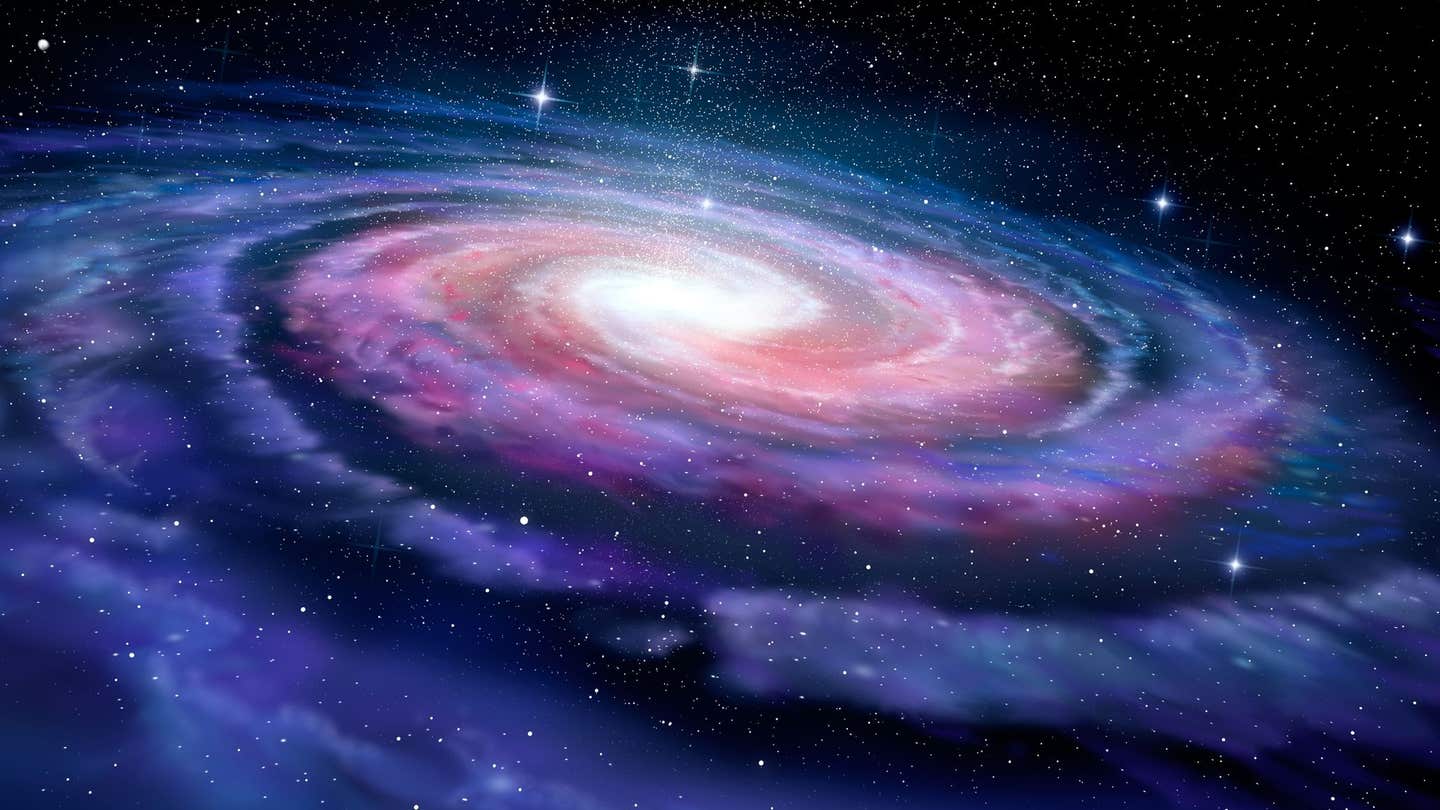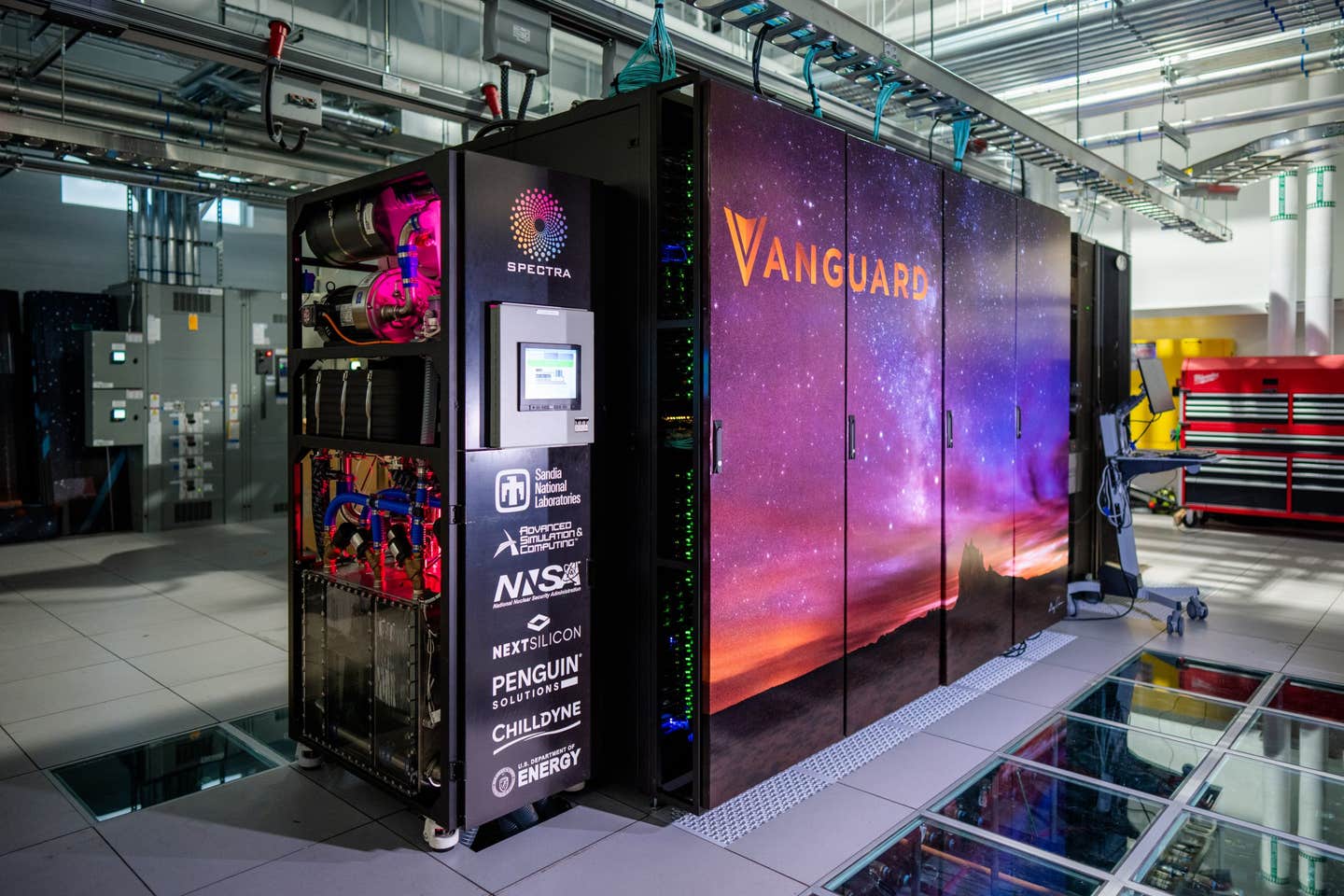Milky Way’s center contains fewer stars — and now we know why
Sagittarius C shows tangled plasma filaments shaped by magnetic fields, offering clues about slow star formation in the Milky Way’s center.

JWST uncovers how magnetic fields in Sagittarius C may slow star birth near the galactic center. (CREDIT: iStock)
A mysterious region near the center of the Milky Way has captured the attention of astronomers. Known as Sagittarius C, this strange place holds thousands of newborn stars, huge clouds of gas, and twisted filaments of glowing plasma. Using the James Webb Space Telescope (JWST), scientists have taken a closer look at this area and discovered something surprising. Sagittarius C doesn't behave like other star-forming regions. Instead, powerful magnetic fields seem to shape its structure and may even slow down star birth.
The new research, led by a team of scientists from the University of Virginia including undergraduate Samuel Crowe and astrophysicist John Bally, shines a light on one of the galaxy’s most extreme neighborhoods. Their findings could help explain why so few stars form near the galactic center, even though the area contains massive clouds of gas.
A Star Factory with a Twist
Sagittarius C lies about 200 light-years from the supermassive black hole at the Milky Way’s core. This black hole has a mass roughly four million times greater than the sun. Gas and dust swirl around it, and over millions of years, this matter has collapsed into a thick, glowing cloud. Inside that cloud, many stars have formed, making Sagittarius C one of the most packed regions of space in our galaxy.
“This region has the highest density of stars and massive, dense clouds of hydrogen, helium, and organic molecules,” said Bally, a professor of astrophysics. “It’s one of the closest regions we know of that has extreme conditions similar to those in the young universe.”
Despite this rich environment, scientists noticed something strange. Sagittarius C and the wider Central Molecular Zone (CMZ) don’t produce as many stars as expected. That puzzled researchers for years. Why does a region with so much star-making material form so few stars? New images taken by JWST’s Near-Infrared Camera (NIRCam) may offer an answer.
Spaghetti in Space
When scientists aimed the Webb telescope at Sagittarius C, they expected to see dense gas clouds and bright stars. What they found instead shocked them. The region is filled with thin, glowing filaments that twist and stretch across the sky like tangled spaghetti noodles.
Related Stories
“We were definitely not expecting those filaments,” said Rubén Fedriani, a postdoctoral researcher and co-author of the study. “It was a completely serendipitous discovery.”
These bright strands are made of plasma, a hot gas made up of charged particles. They emit light at very specific wavelengths, which JWST can detect. The strongest of these filaments form a structure shaped like the Greek letter π (pi), right in the center of the region. Fainter filaments stretch out from the surface of a dense gas cloud.
What’s more, the radio signals coming from these filaments tell a deeper story. Using data from the MeerKAT radio telescope in South Africa and the Atacama Large Millimeter/submillimeter Array (ALMA) in Chile, scientists examined the spectrum of light coming from the filaments. They found that the emission was not just thermal, or heat-based. Instead, a large part of the signal came from nonthermal sources, pointing to magnetic fields as the main drivers of the structure.
The plasma in Sagittarius C shows a spectral index—basically, a fingerprint in radio light—that matches optically thin free–free emission, which is common in ionized gas. However, the spectral index from the 1 to 2 GHz range shows a steep drop, revealing that nonthermal processes are at work throughout the area.
Magnetic Fields: The Invisible Architects
Magnetic fields don’t just appear; they form as charged particles move and swirl, especially near massive objects like black holes. In Sagittarius C, the movement of gas around the central black hole stretches and strengthens these magnetic fields. These invisible forces then trap the plasma into long, rope-like filaments. They shape the gas and may even slow or stop new stars from forming.
Bally and his team believe that these magnetic fields are not only strong, but also in control. They measured something called the plasma beta, which compares thermal pressure to magnetic pressure. A low plasma beta (below 1) means magnetic pressure dominates. In Sagittarius C, even the densest parts of the gas cloud have a low beta. This shows just how powerful the magnetic forces are.
Crowe, who led part of the research as an undergraduate and has since been named a Rhodes Scholar, emphasized the uniqueness of what JWST revealed. “Because of these magnetic fields, Sagittarius C has a fundamentally different shape, a different look than any other star forming region in the galaxy away from the galactic center,” he said.
This kind of magnetic structure is not seen in places like the Orion Nebula, a much closer and more familiar star-forming region. The Orion Nebula has smoother clouds and forms stars at a much higher rate. The difference likely comes down to the strength and reach of magnetic fields.
The Life and Death of Stars
Stars form inside molecular clouds—cold, dense regions filled with gas and dust. Gravity pulls this matter inward until the pressure and heat become great enough to ignite nuclear fusion. When that happens, a new star is born. But this process also triggers the cloud’s destruction.
As stars grow, they emit strong radiation that pushes gas and dust away. Over time, this erodes the cloud, stopping more stars from forming. Bally explained, “Even the sun, we think, formed in a massive cluster like this. Over billions of years, all of our sibling stars have drifted away.”
In a second paper, Crowe and Bally looked more closely at the “protostars,” or young stars forming in Sagittarius C. These stars give off energy that clears out the surrounding gas. Their study showed how these infant stars blow away the material around them, revealing how star birth leads to the cloud’s end.
Sagittarius C is already nearing the final chapter of its life as a stellar nursery. Much of its gas has been blown away, and in a few hundred thousand years, the region may go dark. “It’s almost the end of the story,” Bally said.
A New View of the Galaxy
The findings from JWST offer a new way to look at how stars form in the most extreme parts of the galaxy. While earlier models focused on gravity and gas, these new images show that magnetic forces can be just as important—maybe even more so.
In the CMZ and similar environments near galactic centers, magnetic fields might keep gas from collapsing. That would explain why these areas, despite having massive clouds, don’t create stars as fast as expected.
This research could change how scientists think about galaxies, not just ours, but others across the universe. In the early universe, galaxies were packed with gas and formed stars rapidly. Studying places like Sagittarius C can help unlock the secrets of how that process worked under intense conditions.
JWST has only begun to explore these questions. As more data comes in, scientists will keep peeling back the layers of space to better understand the forces shaping our galaxy.
Research findings are available online in The Astrophysics Journal.
Note: The article above provided above by The Brighter Side of News.
Like these kind of feel good stories? Get The Brighter Side of News' newsletter.



